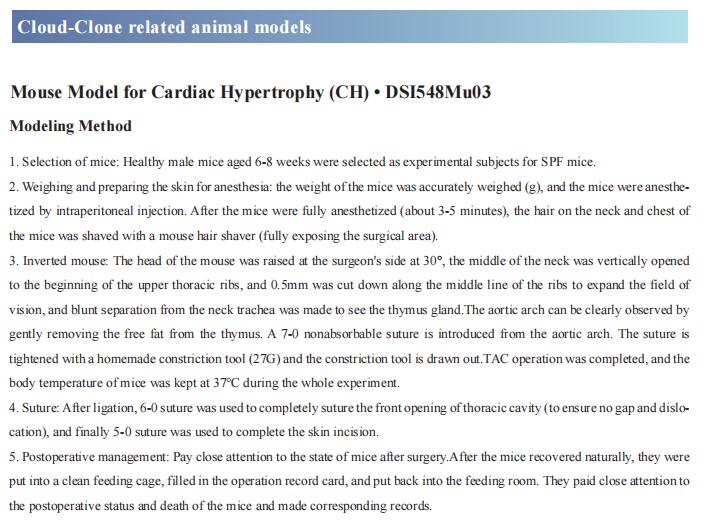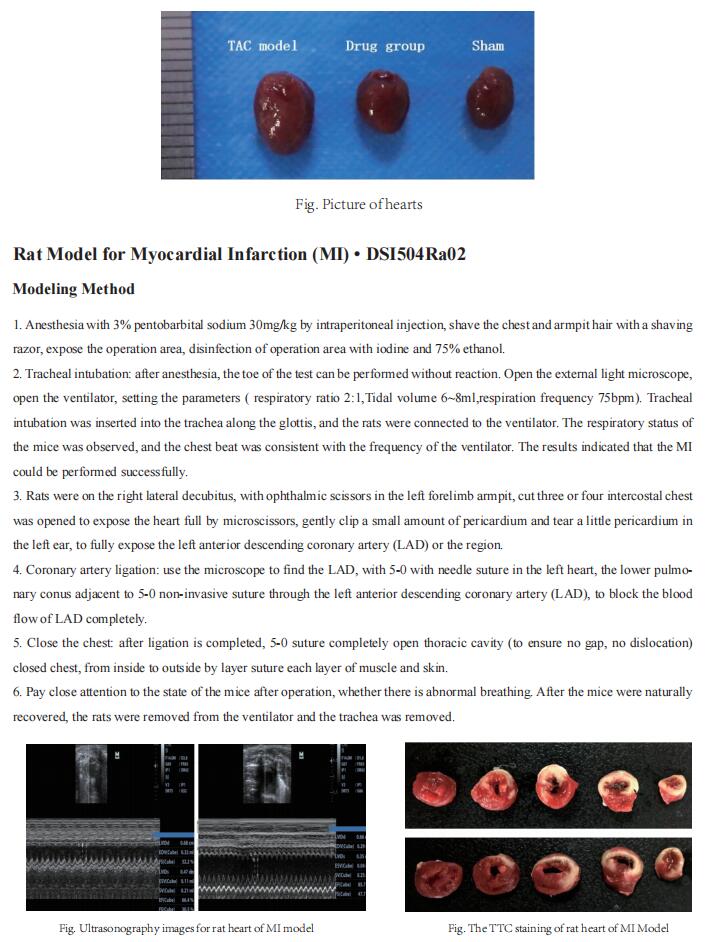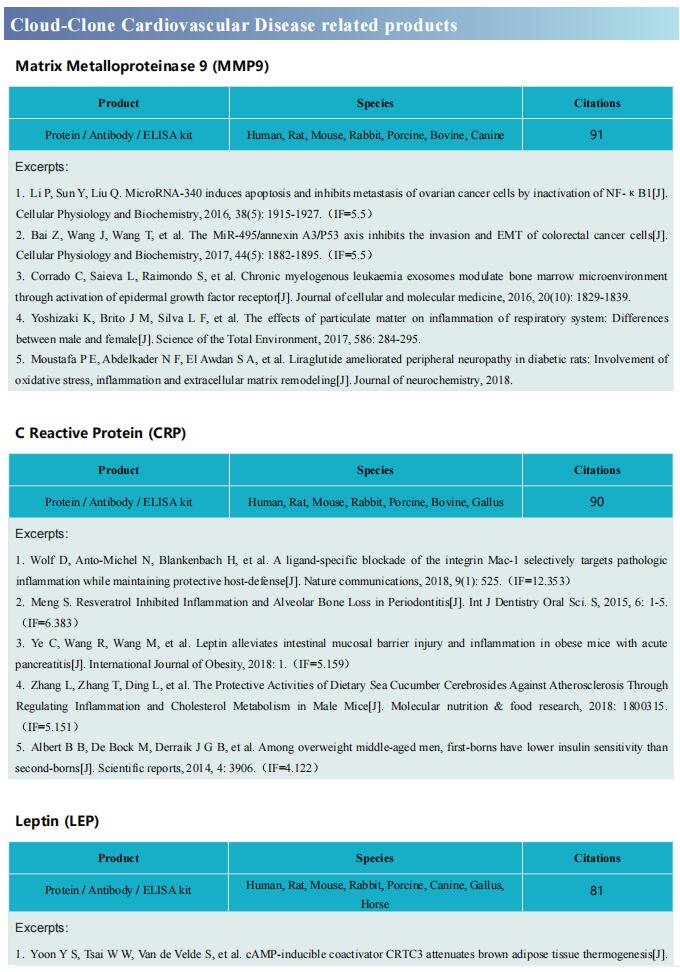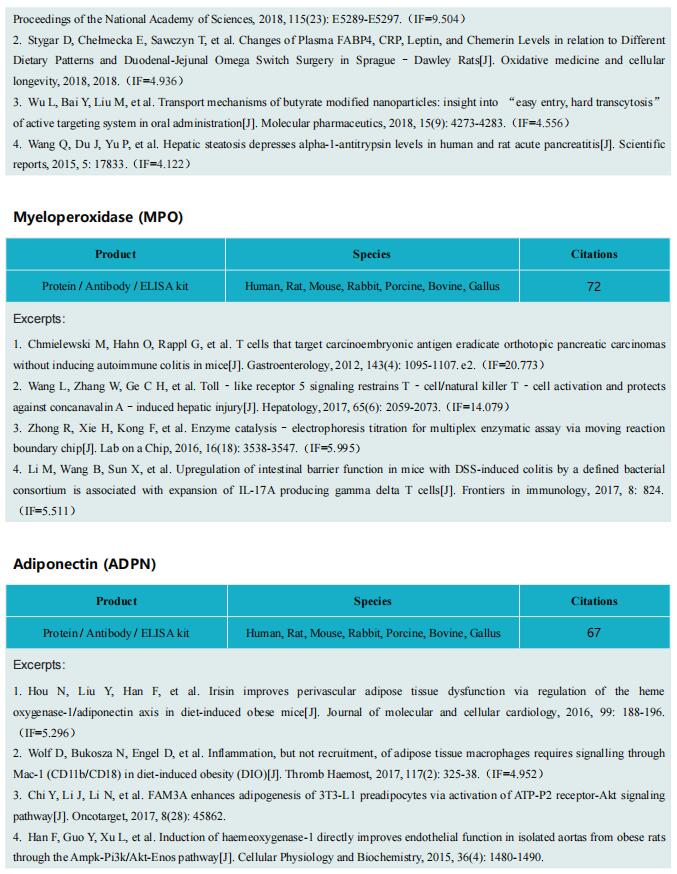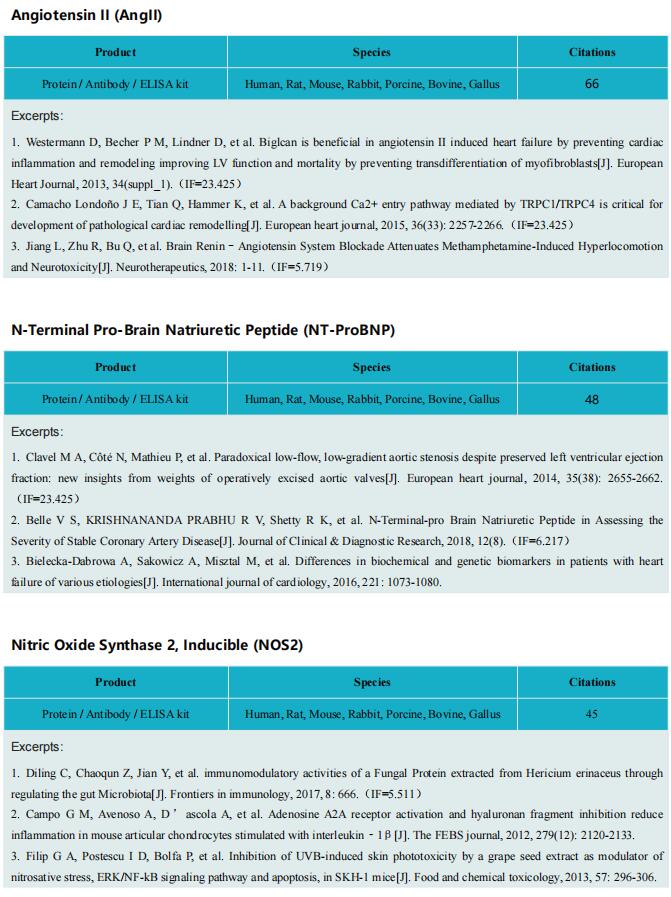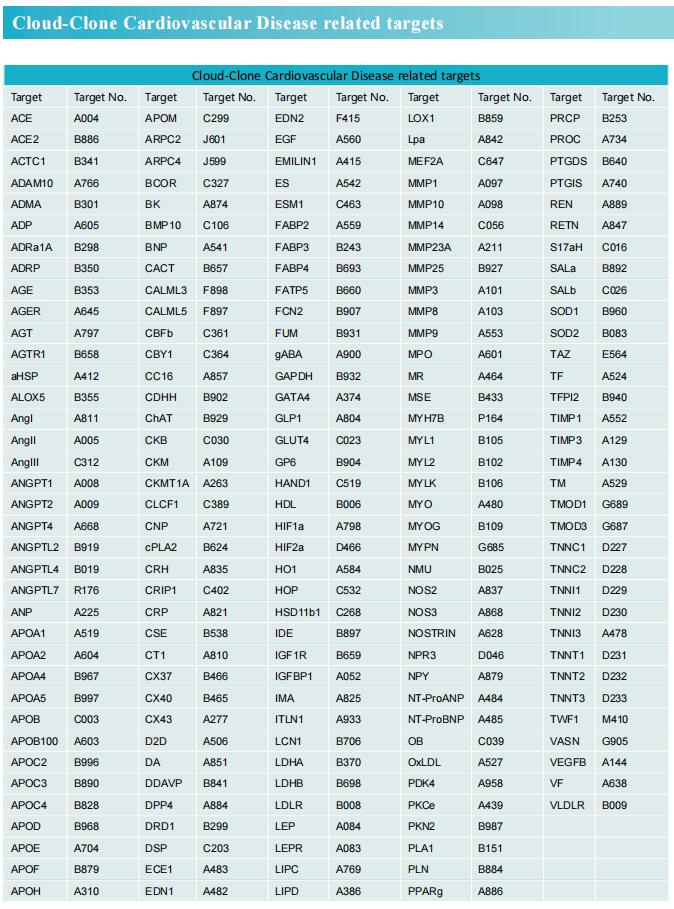New therapeutic targets for atherosclerosis
Atherosclerosis is the leading cause of cardiovascular diseases. Endothelial dysfunction and vascular inflammation are crucial in the initiation and progression of atherosclerosis. Atherosclerosis is initiated by endothelial cells (ECs) activation through modified lipids. Activated ECs release chemokines, which allow for the recruitment of immune cells into the subendothelial space called the intima. The recruited leukocytes produce inflammatory mediators, thus augmenting the ongoing chronic inflammatory process at arterial sites, orchestrating monocyte to macrophage differentiation, foam cell formation, migration, and proliferation of smooth muscle cells. As the disease progresses, the complex inflammatory milieu leads to rupture of unstable lesions and subsequent thrombosis, which might cause severe clinical complications. Therefore, exploring the formation mechanism of atherosclerosis and finding available therapeutic targets can help prevent and improve cardiovascular diseases.
1. Deletion of BACH1 Attenuates Atherosclerosis by Reducing Endothelial Inflammation
The transcription factor BACH1 suppressed ECs proliferation and migration and impaired angiogenesis. Dan Meng, School of Basic Medical Sciences, Fudan University, and his team used mouse models of atherosclerosis in EC-specific-BACH1 knockout mice to study the role of BACH1 in the regulation of atherogenesis and the underlying mechanisms [1]. Endothelial BACH1 deficiency decreased turbulent blood flow- or western diet-induced atherosclerotic lesions, macrophage content in plaques, expression of endothelial adhesion molecules, and reduced plasma TNF-α and IL-1β levels in atherosclerotic mice. Mechanistic studies showed that upon oscillatory shear stress or TNF-α stimulation, BACH1 upregulated YAP expression by binding to the YAP promoter, and formed a complex with YAP inducing the transcription of adhesion molecules (Fig.1). YAP overexpression in ECs counteracted the antiatherosclerotic effect mediated by Bach1-deletion in mice. Rosuvastatin inhibited BACH1 expression by upregulating microRNA let-7a in ECs, and decreased Bach1 expression in the vascular endothelium of hyperlipidemic mice. These data identify BACH1 as a mechanosensor of hemodynamic stress and reveal that the BACH1-YAP transcriptional network is essential to vascular inflammation and atherogenesis. BACH1 shows potential as a novel therapeutic target in atherosclerosis.
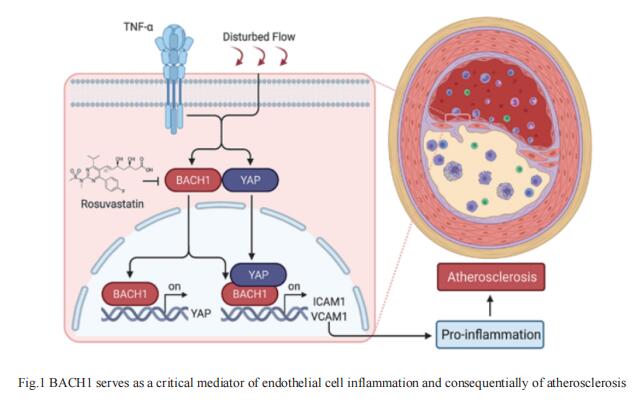
2. Olfactory receptor 2 in vascular macrophages drives atherosclerosis by NLRP3-dependent IL-1 production
Olfactory receptors (OLFRs) are G protein–coupled chemoreceptors that have a central role in detecting odorants and the sense of smell. Klaus Ley, La Jolla Institute for Immunology, USA, and his team found that mouse vascular macrophages express the olfactory receptor Olfr2 and all associated trafficking and signaling molecules [2]. They demonstrated that the octanal receptor Olfr2 in mouse and OR6A2 in human vascular macrophages in conjunction with TLR4 ligation induces inflammasome activation in response to octanal, leading to IL-1a and IL-1b protein production and secretion. The source of octanal appears to be lipid peroxidation from oleic acid, which is most pronounced in the atherosclerotic aorta. Boosting octanal levels exacerbated atherosclerosis, whereas genetic targeting of Olfr2 in mice significantly reduced atherosclerotic plaques (Fig.2). They proposed that drug-like small molecules targeting OR6A2 and possibly other OLFRs may constitute novel therapeutic targets for the treatment, prevention, and reversal of atherosclerosis.
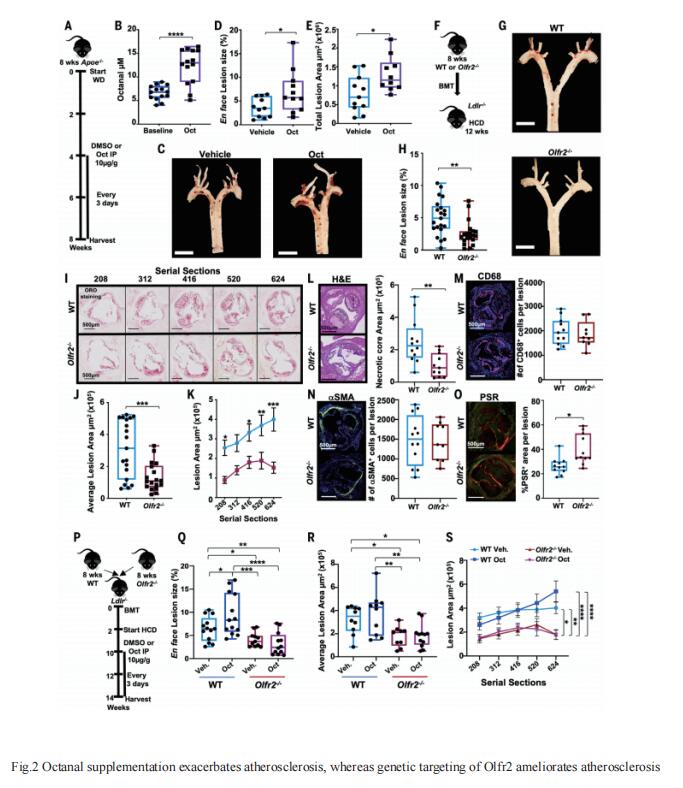
3. The epigenetic enzyme DOT1L orchestrates vascular smooth muscle cell–monocyte crosstalk and protects against atherosclerosis via the NF-κB pathway
A hallmark of atherosclerosis is neointimal formation, i.e. hyperplasia of vascular smooth muscle cells (VSMCs), which produces a multi-layered compartment internally to the tunica media of the arterial wall, inducing a gradual narrowing of the vessel lumen that may lead to vessel occlusion. DOT1L is a histone H3K79 methyltransferase. Leonardo Elia, IRCCS Humanitas Research Hospital, Italy, and hia team aimed to determine whether DOT1L modulates VSMCs phenotype and how it might affect atherosclerosis in vitro and in vivo, unravelling the related mechanism [3]. Gene expression screening of VSMCs stimulated with the BB isoform of platelet-derived growth factor led them to identify Dot1l as an early up-regulated epigenetic factor. Mouse and human atherosclerotic lesions were assessed for Dot1l expression, which resulted specifically localized in the VSMC compartment. Inactivation of DOT1L significantly reduced disease progression in atherosclerosis mice. By combining RNA- and H3K79me2-chromatin immunoprecipitation-sequencing, they found that DOT1L and its induced H3K79me2 mark directly regulate the transcription of Nf-κB-1 and -2, master modulators of inflammation, which in turn induce the expression of CCL5 and CXCL10, cytokines fundamentally involved in atherosclerosis development(Fig.3). DOT1L plays a key role in the epigenetic control of VSMC gene expression, leading to atherosclerosis development.Results identify DOT1L as a potential therapeutic target for vascular diseases.
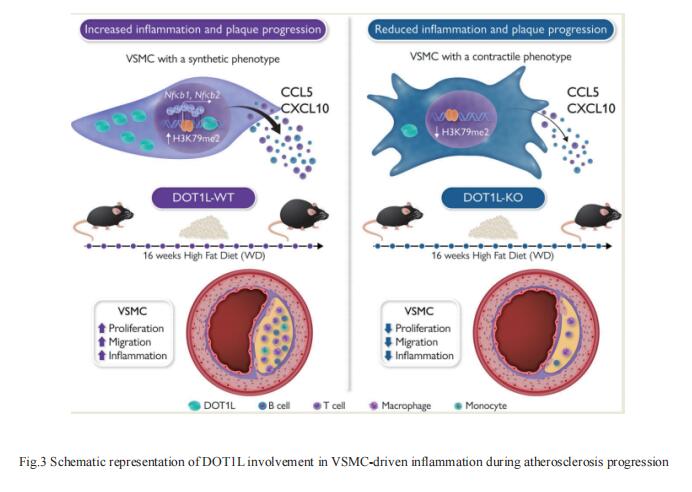
References
[1]Jia M, Li Q, Guo J, et al. Deletion of BACH1 Attenuates Atherosclerosis by Reducing Endothelial Inflammation [J]. Circ Res. 2022, CIRCRESAHA121319540. (IF=17.364)
[2]Orecchioni M, Kobiyama K, Winkels H, et al. Olfactory receptor 2 in vascular macrophages drives atherosclerosis by NLRP3-dependent IL-1 production. Science. 2022, 375(6577):214-221. (IF=47.728)
[3]Farina FM, Serio S, Hall IF, et al. The epigenetic enzyme DOT1L orchestrates vascular smooth muscle cell-monocyte crosstalk and protects against atherosclerosis via the NF-κB pathway [J]. Eur Heart J. 2022, ehac097. (IF=29.983)
Cloud-Clone can not only provide multiple cardiovascular system disease models, including hyperlipidemia and atherosclerosis, hypertension, myocardial hypertrophy, myocardial infarction, arrhythmia, heart failure, etc., covering common cardiovascular system diseases. It also has all kinds of common indicators of cardiovascular system signal pathway and inflammatory indicators related products, which can help the majority of scientific researchers to study cardiovascular system diseases.
